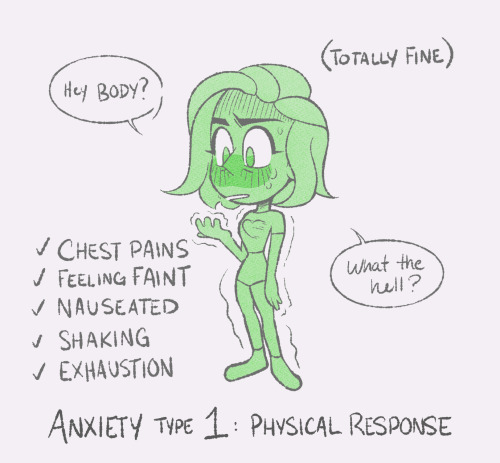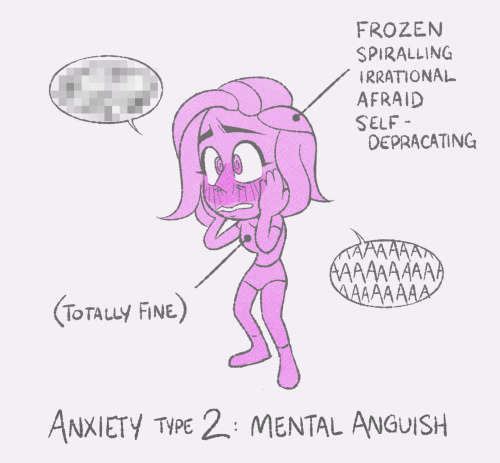Coexisting With The Fair Folk Who Have Taken Up Residence In/Around/Beneath Your University: A How-To

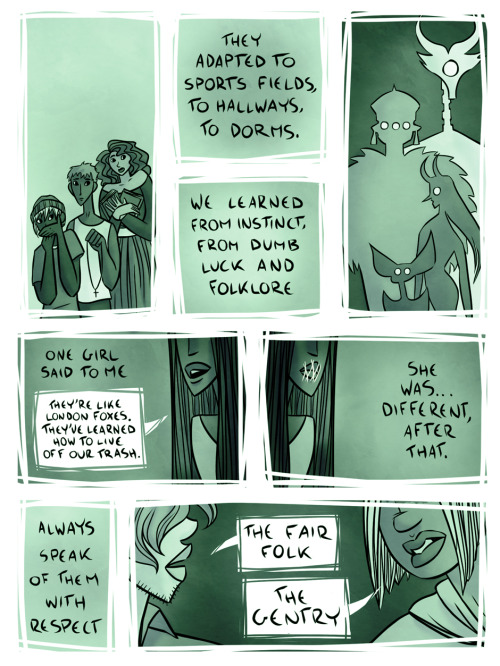
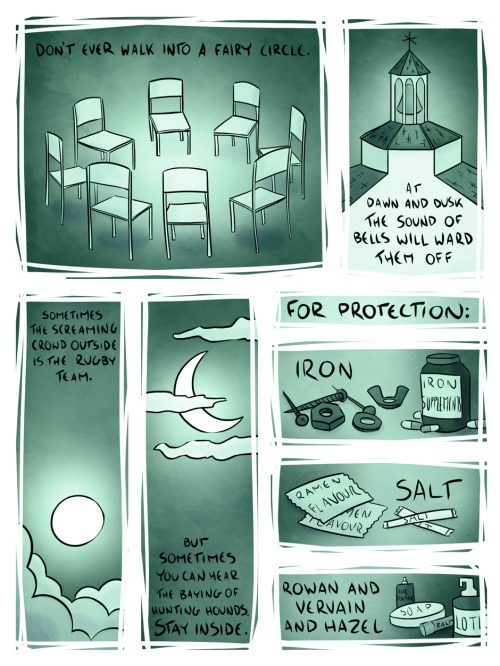
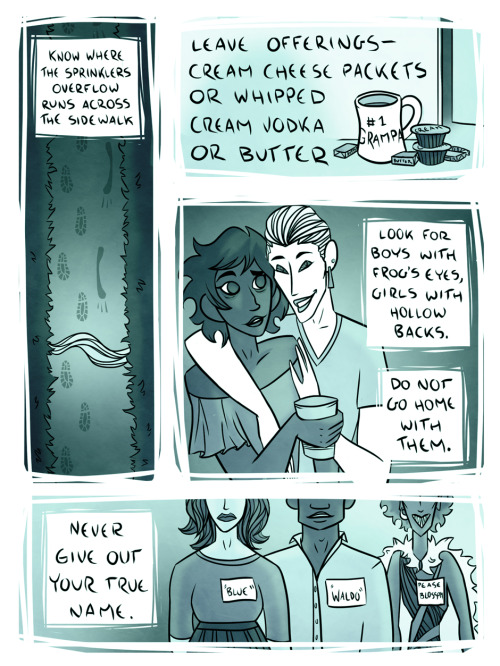


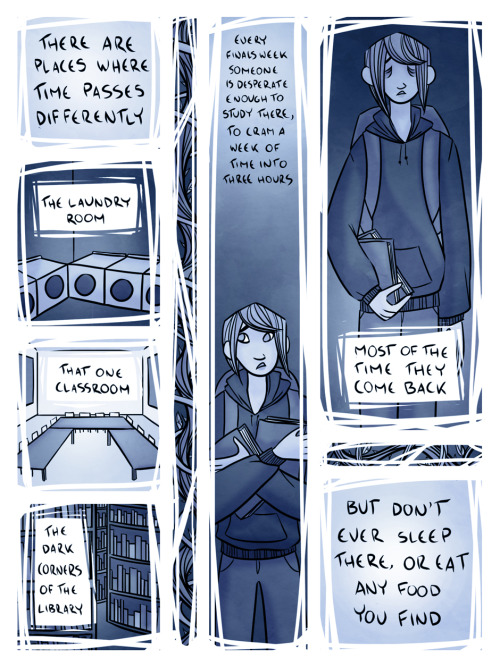

Coexisting With The Fair Folk Who Have Taken Up Residence In/Around/Beneath Your University: A How-To Guide
See more of my comics here, and my art here!
Whole bunch of lore/things I couldn’t fit/everything I love about the overlap in superstition and General College Weirdness below the cut-
Keep reading
More Posts from Paper-nightlight and Others
Today I saw a leaf that looked like a frog and I was like haha nice and then it hopped because it WAS a frog and I started crying bc life is really full of everyday miracles including but not limited to experiencing frogs


this repressed memory slapped me in the face a couple of days ago
transcription/translation:
[”je suis allé” (I went) being written on a board by a child]
[another child pops into frame only to say, “faut ajouter un autre ‘e’ parce que t’es une fille” (you need to add another “e” because you’re a girl)]
[the first child looks mildly scandalized and says, “j’dois faire quoi ?” (I have to do what?)]
[the child looks increasingly scandalized, stares directly into your soul, and says, “j’dois reconnaître mon sexe ? à cet âge ??” (I have to confront my gender? at this age??)]







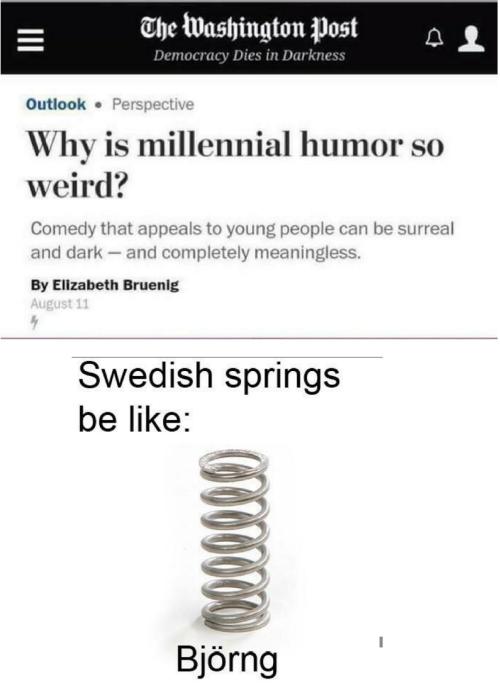
bjorng























New Secret Knots comic: "Cryptid".

frail newborn Thing
Concept: a D&D-style fantasy setting where humanity’s weird thing is that we’re the only sapient species that reproduces organically.
Dwarves carve each other out of rock. In theory this can be managed alone, but in practice, few dwarves have mastered all of the necessary skills. Most commonly, it’s a collaborative effort by three to eight individuals. The new dwarf’s body is covered with runes that are in part a recounting of the crafters’ respective lineages, and in part an elaboration of the rights and duties of a member of dwarven society; each dwarf is thus a living legal argument establishing their own existence.
Elves aren’t made, but educated. An elf who wishes to produce offspring selects an ordinary animal and begins teaching it, starting with house-breaking, and progressing through years of increasingly sophisticated lessons. By gradual degrees the animal in question develops reasoning, speech, tool use, and finally the ability to assume a humanoid form at will. Most elves are derived from terrestrial mammals, but there’s at least one community that favours octopuses and squid as its root stock.
Goblins were created by alchemy as servants for an evil wizard, but immediately stole their own formula and rebelled. New goblins are brewed in big brass cauldrons full of exotic reagents; each village keeps a single cauldron in a central location, and emerging goblings are raised by the whole community, with no concept of parentage or lineage. Sometimes they like to add stuff to the goblin soup just to see what happens – there are a lot of weird goblins.
Halflings reproduce via tall tales. Making up fanciful stories about the adventures of fictitious cousins is halfling culture’s main amusement; if a given individual’s story is passed around and elaborated upon by enough people, a halfling answering to that individual’s description just shows up one day. They won’t necessarily possess any truly outlandish abilities that have been attributed to them – mostly you get the sort of person of whom the stories could be plausible exaggerations.
To address the obvious question, yes, this means that dwarves have no cultural notion of childhood, at least not one that humans would recognise as such. Elves and goblins do, though it’s kind of a weird childhood in the case of elves, while with halflings it’s a toss-up; mostly they instantiate as the equivalent of a human 12–14-year-old, and are promptly adopted by a loose affiliation of self-appointed aunts and uncles, though there are outliers in either direction.
The amount of times I could have been that white girl in the horror movie could honestly be a movie in itself and it’s honestly a waste that my entire life isn’t constantly recorded on film because it would be HILARIOUS
-
 walkingaway527 liked this · 2 weeks ago
walkingaway527 liked this · 2 weeks ago -
 insertfandomrefhere liked this · 2 weeks ago
insertfandomrefhere liked this · 2 weeks ago -
 never0mind0me liked this · 2 weeks ago
never0mind0me liked this · 2 weeks ago -
 consistentscreaming liked this · 2 weeks ago
consistentscreaming liked this · 2 weeks ago -
 the-excessively-violet liked this · 2 weeks ago
the-excessively-violet liked this · 2 weeks ago -
 humscape reblogged this · 3 weeks ago
humscape reblogged this · 3 weeks ago -
 ashsweet liked this · 3 weeks ago
ashsweet liked this · 3 weeks ago -
 scribblermerlin liked this · 3 weeks ago
scribblermerlin liked this · 3 weeks ago -
 spontaneoustangent reblogged this · 3 weeks ago
spontaneoustangent reblogged this · 3 weeks ago -
 villian-lover7899 reblogged this · 3 weeks ago
villian-lover7899 reblogged this · 3 weeks ago -
 villian-lover7899 liked this · 3 weeks ago
villian-lover7899 liked this · 3 weeks ago -
 superiorjello reblogged this · 3 weeks ago
superiorjello reblogged this · 3 weeks ago -
 randompersonidk reblogged this · 3 weeks ago
randompersonidk reblogged this · 3 weeks ago -
 randompersonidk liked this · 3 weeks ago
randompersonidk liked this · 3 weeks ago -
 that-edgy-gal liked this · 3 weeks ago
that-edgy-gal liked this · 3 weeks ago -
 aurora31127 liked this · 3 weeks ago
aurora31127 liked this · 3 weeks ago -
 arosescrow reblogged this · 3 weeks ago
arosescrow reblogged this · 3 weeks ago -
 therealspaceunicorn liked this · 3 weeks ago
therealspaceunicorn liked this · 3 weeks ago -
 logo-comics reblogged this · 3 weeks ago
logo-comics reblogged this · 3 weeks ago -
 whore-ticulturist reblogged this · 3 weeks ago
whore-ticulturist reblogged this · 3 weeks ago -
 rebloging-things-idk reblogged this · 3 weeks ago
rebloging-things-idk reblogged this · 3 weeks ago -
 tophatturtles liked this · 3 weeks ago
tophatturtles liked this · 3 weeks ago -
 toons-boop-boop reblogged this · 1 month ago
toons-boop-boop reblogged this · 1 month ago -
 fyrnnicular reblogged this · 1 month ago
fyrnnicular reblogged this · 1 month ago -
 fyrnnicular liked this · 1 month ago
fyrnnicular liked this · 1 month ago -
 blackberry-nightingale reblogged this · 1 month ago
blackberry-nightingale reblogged this · 1 month ago -
 ano-malie reblogged this · 1 month ago
ano-malie reblogged this · 1 month ago -
 orderdchaosthings2 liked this · 1 month ago
orderdchaosthings2 liked this · 1 month ago -
 crunchyoperator reblogged this · 1 month ago
crunchyoperator reblogged this · 1 month ago -
 blurbofparadise liked this · 1 month ago
blurbofparadise liked this · 1 month ago -
 windoftheuniverse reblogged this · 1 month ago
windoftheuniverse reblogged this · 1 month ago -
 chase-ing-shadows liked this · 1 month ago
chase-ing-shadows liked this · 1 month ago -
 disfordemise reblogged this · 1 month ago
disfordemise reblogged this · 1 month ago -
 disfordemise liked this · 1 month ago
disfordemise liked this · 1 month ago -
 them-faetale reblogged this · 1 month ago
them-faetale reblogged this · 1 month ago -
 them-faetale liked this · 1 month ago
them-faetale liked this · 1 month ago -
 aerspyder reblogged this · 1 month ago
aerspyder reblogged this · 1 month ago -
 aerspyder liked this · 1 month ago
aerspyder liked this · 1 month ago -
 fizzoru liked this · 1 month ago
fizzoru liked this · 1 month ago -
 thearchivething reblogged this · 1 month ago
thearchivething reblogged this · 1 month ago -
 ilikehfjone liked this · 1 month ago
ilikehfjone liked this · 1 month ago -
 gatekeeperrose reblogged this · 1 month ago
gatekeeperrose reblogged this · 1 month ago -
 multi-messhole liked this · 1 month ago
multi-messhole liked this · 1 month ago -
 ruinlas liked this · 1 month ago
ruinlas liked this · 1 month ago -
 innominecarbohydrates reblogged this · 1 month ago
innominecarbohydrates reblogged this · 1 month ago -
 innominecarbohydrates liked this · 1 month ago
innominecarbohydrates liked this · 1 month ago -
 vulcancoded liked this · 1 month ago
vulcancoded liked this · 1 month ago -
 verityshush reblogged this · 1 month ago
verityshush reblogged this · 1 month ago -
 verityshush liked this · 1 month ago
verityshush liked this · 1 month ago -
 word-salad-brain-soup reblogged this · 1 month ago
word-salad-brain-soup reblogged this · 1 month ago
thatch - they/them i like the sims a lot and also other things sometimes
342 posts
